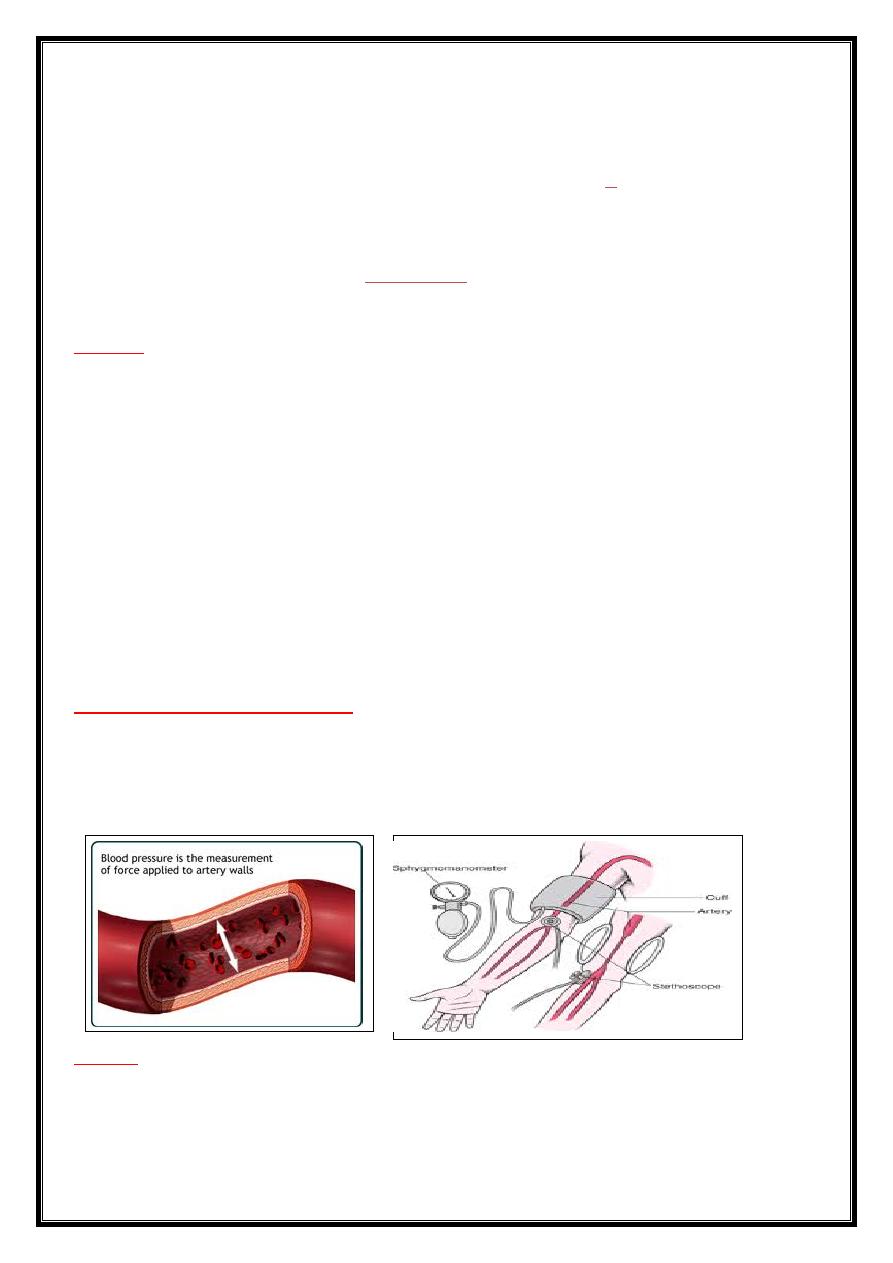
I
CHAPTER –SIX
Thi-qar uni. Collage of medicine
(Academic years 2019-2020)
Pressure
-------------------------------------------------------------------------------------------------
Pressure
-Atmospheric pressure is due to the weight of the air in the atmosphere .
-
pressure is define as the force per unit area in a gas or a liquid .
-
for a solid the quantity of force per unit area is referred as stress
.
P = F/A N / m²
Or dynes/cm ²
atmospheric pressure 1= 10
5
N /m² 1 atm = 10
5
N/m²
The unit of pressure is Pascal (Pa)
In medicine , the unit of pressure is measured by the height of a column of
mercury .
Measurement of body pressure
Pressure is a very common phenomenon in our live. eg; the doctor measures our
blood pressure as a part of a physical examination.
Units: - In metric system pressure is measured in units
a. Dynes per square centimeters
b. Newton per square meter (Pascal) or (Pa)
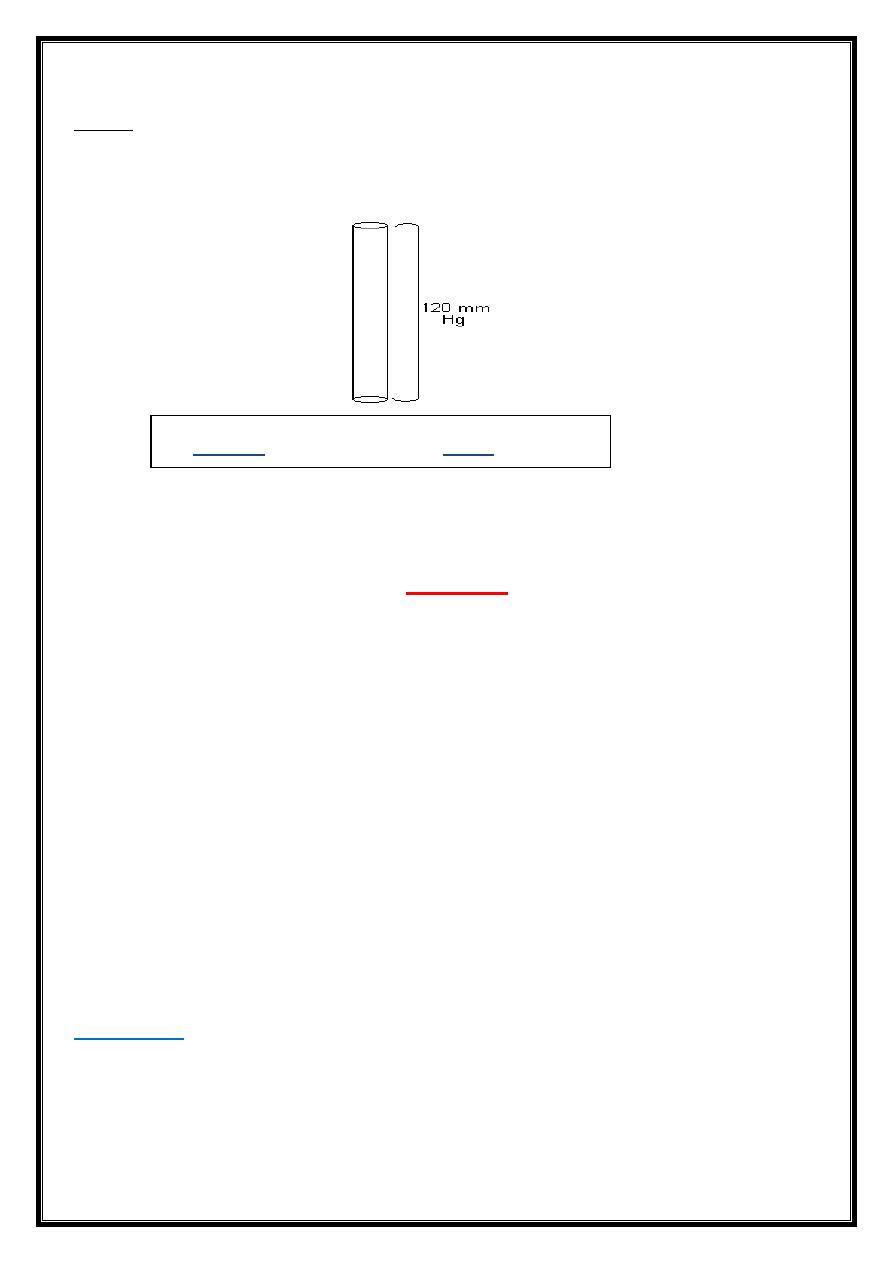
II
Note: - none of the above units is in common in medicine.
The used unit is the height of a column of mercury (Hg)
The peak systolic pressure is 120mm Hg = a pressure of a liquid mercury of this
height on its base. While the atmospheric pressure = 760mm Hg
For mercury ρ=13.6 g/cm
3
for water ρ=1 g/cm
3
Pressure = force per unit area in a gas or liquid
Stress = force per unit area in a solid
1 Pa (Pascal) = 1 N/m
2
Pressure under a column of liquid:
P = ρ g h
ρ = density of the liquid
g = acceleration due to gravity
h = height of the column
In the metric system pressure is measured in dynes per square centimeter
(Dy/cm
2
) or Newton per square meter (N/m
2
) or Pascal (Pa).
If the unit is Dy/cm
2
P = ρ g h ρ = density of liquid (g/cm
3
)
g=980(cm/sec
2
) acceleration of gravity
h= in (cm) the height of liquid
Or
the unit is N/m
2
P = ρ g h ρ = (kg/m
3
)
g= 9.8 m/ sec
2
h= In (m)
Example -1-
Find the pressure of 10 m of water in Dy/cm
2
and N/m
2
?
10 × 100 = 1000 cm 1m=100cm
.
.
. P = ρ g h =1×980×1000=980000=9.8×10
5
Dy/cm
2
P = ρ g h =1000 × 9.8 ×10 =9.8×10
4
N/m
2
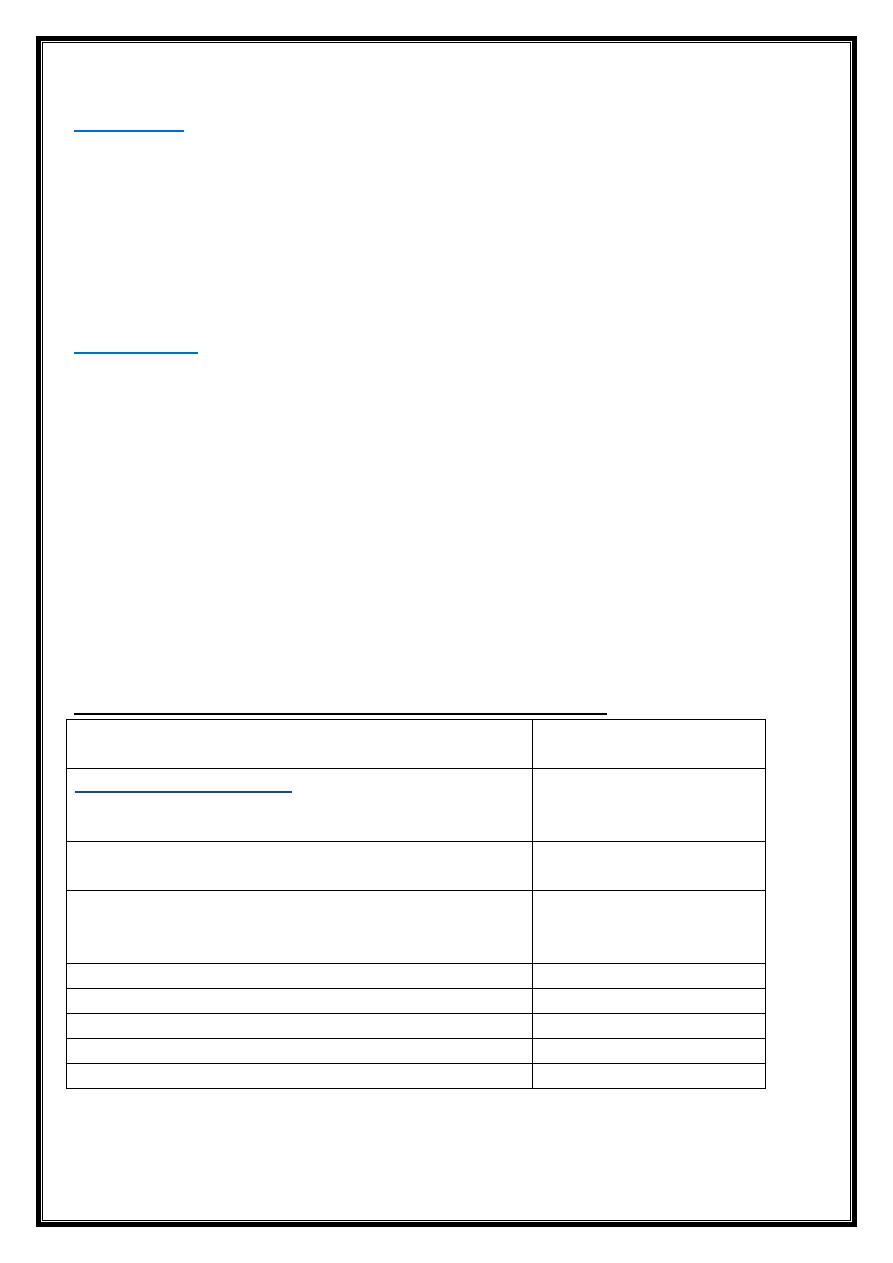
III
Example -2-
Calculate the systolic pressure in Dy/cm
2
and N/m
2
?
In systolic pressure =120 mmHg=12 cmHg
= 0.12 m Hg
.
.
. P = ρ
Hg
g h
Hg
=13.6×980×12=159936=1.6×10
5
Dy/cm
2
P = ρ
Hg
g h
Hg
=13600×9.8×0.12=1.6×10
4
N/m
2
Example – 3 -
What height of water will produce the same pressure as 120 mm Hg?
For mercury.
P (120 mm Hg) =ρgh= (13.6 g/cm
3
)*(980 cm/sec
2
)*(12 cm) =1.6*10
5
dyne/cm
2
For water
1.6*10
5
dyne/cm
2
= (1.0 g/cm
3
)*(980 cm/sec
2
)*(h cm H
2
O)
.∙.h = 163 cm H
2
O.
The atmospheric pressure is about 10
5
N/cm
2
(or Pa).
When the pressure is lower than the atmospheric we call it (Negative pressure),
while when it is higher than atmospheric we call it (positive pressure)
There are many places in the body where the pressures are (Negative).
The following table lists some typical pressures in the body:
Part of the body
Typical pressure
(mm Hg)
Arterial blood pressure:
Maximum (systolic)
Minimum (diastolic)
100-140
60-90
Venous blood pressure
Great veins
3-7
< 1
Capillary blood pressure:
Arterial end
Venous end
30
10
Middle ear pressure
< 1
Eye pressure – aqueous humor
20
Cerebrospinal fluid pressure in brain (lying down)
5-12
Gastrointestinal pressure
10-20
Intrathoracic pressure (between lung and chest wall)
-10
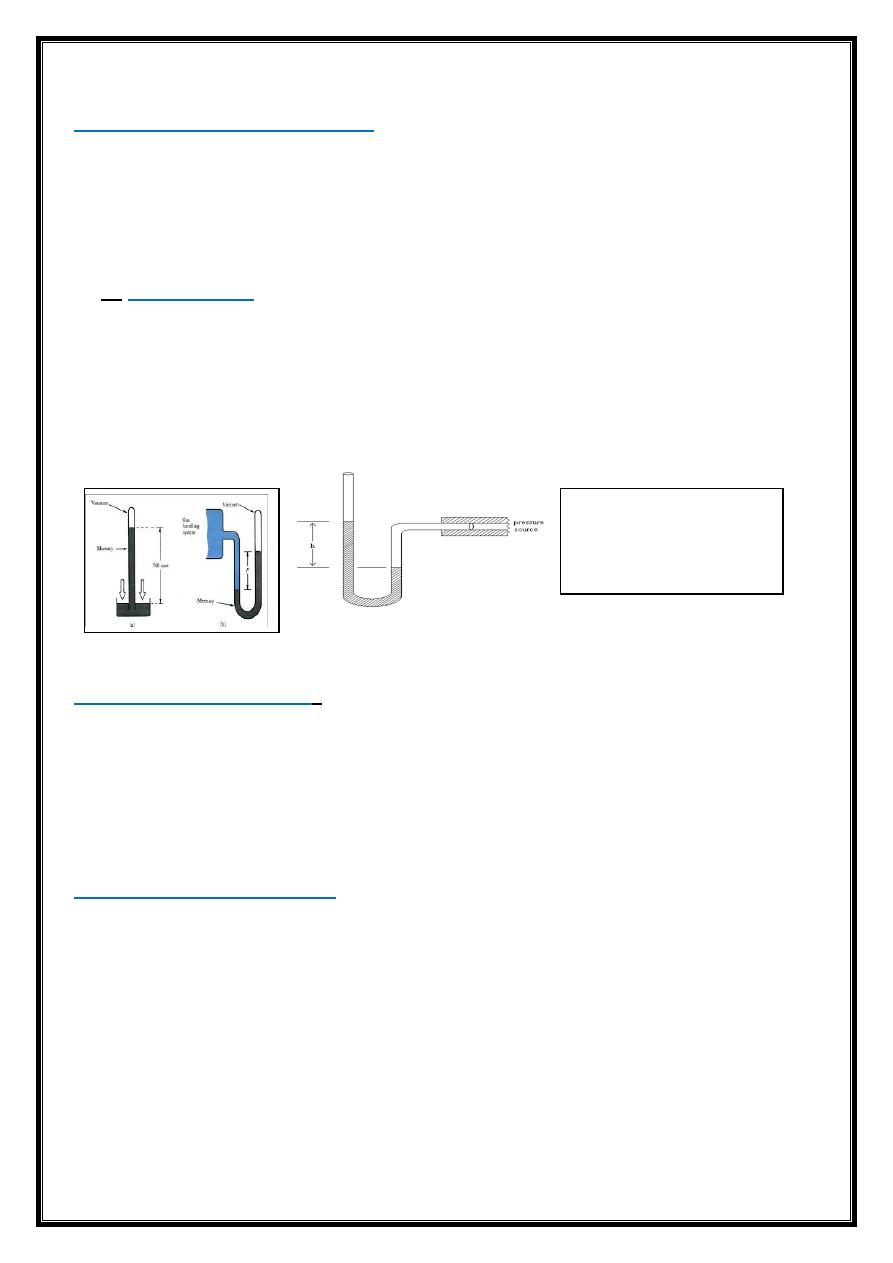
IV
Devices used to measure pressure
1- U shape tube monometer --------------used to measure either a (+ve) or
(-ve)pressure.
2- Tonometer-----used to measure the eye pressure (+ve pressure only)
3- Cystometer-----used to measure the urinary bladder .
4-Sphygmomanometer----used to measure the blood pressure (+ve pre.)
A-
Manometer:-
This is a U-shaped tube containing a fluid that is connected
to the pressure to be measured. The levels in the arms change until the
difference in the levels (h) is equal to the pressure.
*This type of manometer can measure both (positive) and (negative) pressure.
*The fluid used can be
1. Mercury for high pressure measurements.
2. Water or other low density fluid (for low pressures).
B-Sphygmomanometer:
- is the clinical instrument used for measuring the
blood pressure. It can be provided by one of two types of gauges.
1. Mercury gauge:-the pressure is indicated by the height of mercury inside a
glass tube.
2. Aneroid type:-the pressure changes the shape of a sealed flexible container,
which causes a needle to move on a dial or the value is showed as a digit.
Pressure inside the skull:-
The brain contain about (150cm
3
) of cerebrospinal fluid "CSF" in a series
of interconnected opening called "
Ventricles"
CSF is generated inside the brain and flows throw the ventricles into the
spinal column and eventually into the circulatory system.
One of the ventricles the aqueduct is especially narrow. If at birth this opening is
blocked for any reason ,the CSF is trapped inside the skull and increases the
internal pressure, the increased pressure causes the skull to enlarge, this
condition is called "Hydrocephalus"
Figure: A -U tube manometer
for measuring pressure which
is can be expressed as the
height of the fluid
,
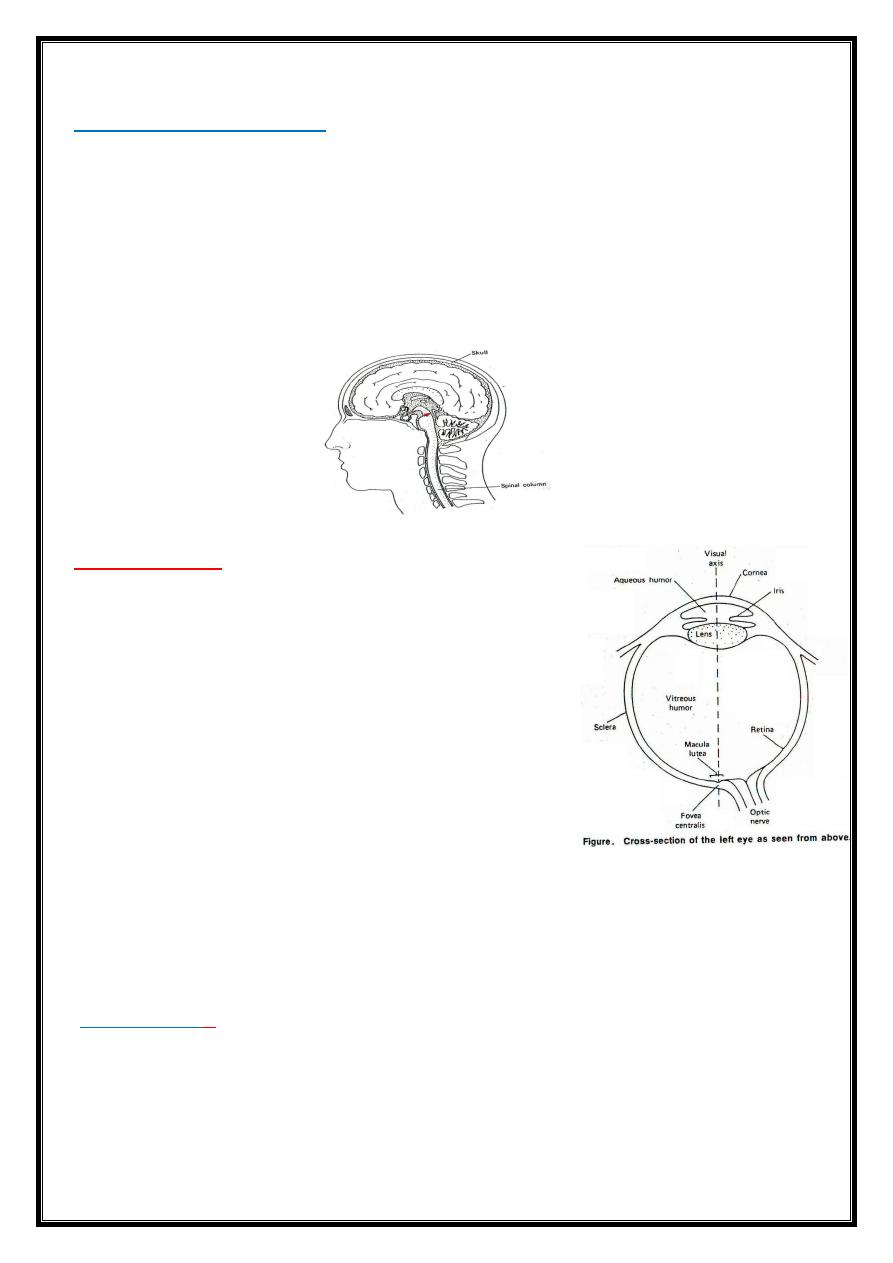
V
Detection of hydrocephalus:
It is not convenient to measure the CSF pressure directly. The method to detect
hydrocephalus is to measure the circumference of the skull just above the ears.
1- Normal value for the circumference of the skull of an infant is (32 to 37
cm), and a larger value may indicate hydrocephalus.
2- Transillumination: Makes use of the light-scattering properties of the
rather-clear CSP inside the skull.
Figure: A cross-section of the brain showing the location of the cerebrospinal
fluid (shaded area) and the aqueduct (arrow).
Eye Pressure:-
If a partial blockage of this drain system occurs, the pressure increases and
the increased pressure can restrict the blood supply to the retina and thus affect
the vision. This condition called Glaucoma, produces tunnel vision in moderate
cases and blindness in sever conditions.
Tonometers
:-These are instruments used for measuring the amount of
indentation produced by a certain force.
The clear fluids in the eye ball
(aqueous and
vitreous humors)
are under pressures that maintain
the eyeball in a fixed size and shape
.(they transmit
the light to the retina).
The dimensions of the eye are critical to good
vision. A change of only 0.1mm in its diameter has a
significant effect on the clarity of vision.
The fluid in the front of the eye, the aqueous
humor, is mostly water. The eye continuously
produces aqueous humor and a drain system allows
the surplus to escape.
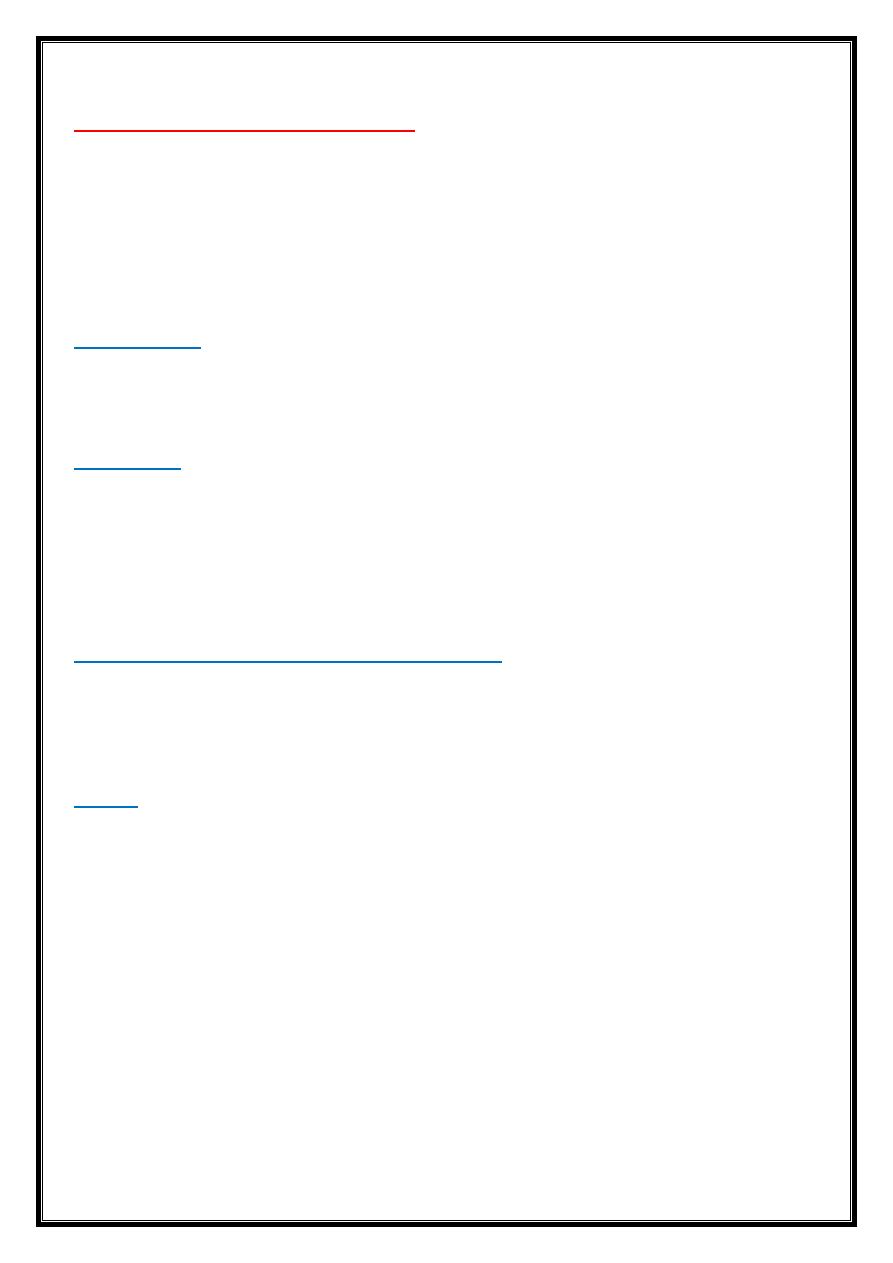
VI
Pressure in the digestive system:-
Digestive tract:
Opening through the body
Over 6 m
Closed at the lower end and has several restrictions
Valves and sphincters permit unidirectional flow of food
It is ( +ve ) except in the esophagus part.
Esophagus:-
this part is coupled with pressure of respiratory system,
Then esophagus pressure is ( -ve) during inspiration. The intrathoracic pressure
is sometimes determined by measuring the pressure in the esophagus
Stomach:-
The pressure in it is increased because of the stretching of the
stomach walls .
Eating increases the pressure in the stomach slowly due to increased
volume
Air swallowed during eating increases the pressure in the stomach -
burping or belching
●The pressure inside the stomach increase by:
1- The accumulation of food ,then it causes the stomach wall to stretch
and then the volume of the stomach increase.
2- Air swallowed during eating, air trapped in the stomach causes belching.
Gut:-
gas (flatus) generated by the bacterial action increases the pressure, and
hence it is higher the atmospheric. The pressure in the digestive system is
coupled to that in the lungs through the flexible diaphragm that separates two
organ systems.
Occasionally a blockage forms in the small or large intestine and a pressure
build up between the blockage and the pylorus. If this pressure becomes great
enough to restrict blood flow to critical organs, it can cause death. And can be
solved by:
Intubation
: passing of a hollow tube through nose, stomach, and
pylorus ,or,
Surgery
, chosen when the intubations don't work
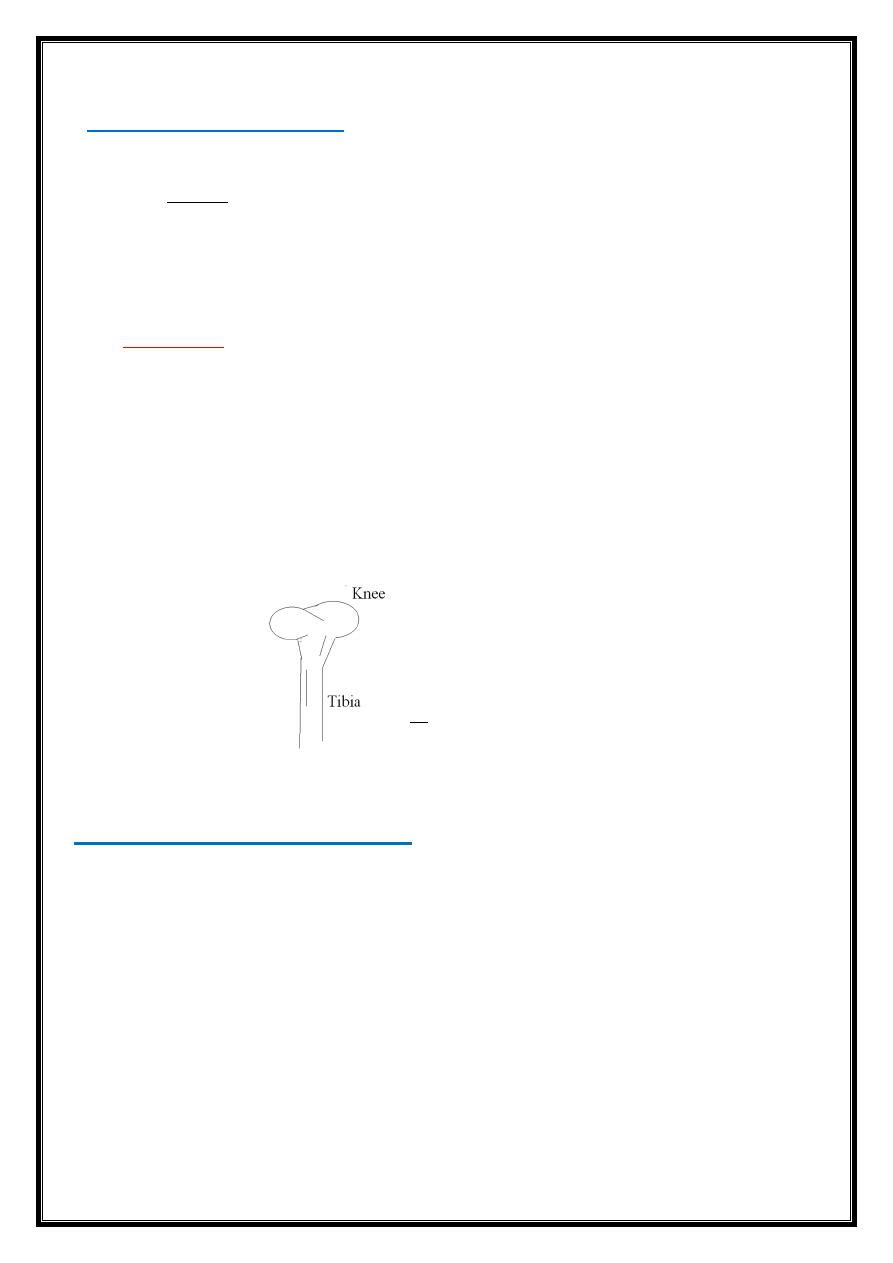
VII
●Pressure in the skeleton:-
This is the highest pressure that can be found in the body-for example when all
the weight of the body is on one leg, such as when walking, the pressure in the
knee joint may be more than 10 atmospheres!!
P=F/A---------------- (1)
*
The surface area
of a bone at the joint is greater than its area either above or
below the joint. The larger area at the joint distributes the force, thus reducing
the pressure.
according to the equation 1.
Bone has adapted in another way to reduce pressure the finger bones are flat
rather than cylindrical on the gripping side and the force is spread over a large
surface this reducing tissues over the bones according to
P=F/A
.
Healthy bone joints are better lubricated than the best man-made bearings. The
human joints system is such that; the higher pressure →the better lubrication.
●Pressure in the urinary bladder:-
One of the most noticeable internal pressure is the pressure in the bladder this
pressure is due to accumulation of the urine.
For adults, the typical maximum volume in the bladder before voiding is 500ml.
At some pressure
(≈30cm H
2
O).
The micturition reflex occurs. The resulting
sizable muscular contraction in the bladder wall produces a momentary pressure
up to 150cm H
2
O.
Normal voiding pressure is fairly low (20 to 40cm H
2
O)
For men who suffer from prostatic obstruction of the urinary passage it may be
over 100cm H
2
O
Figure: The surface area of a
bone at the joint is greater than
its area either above or below the
joint.
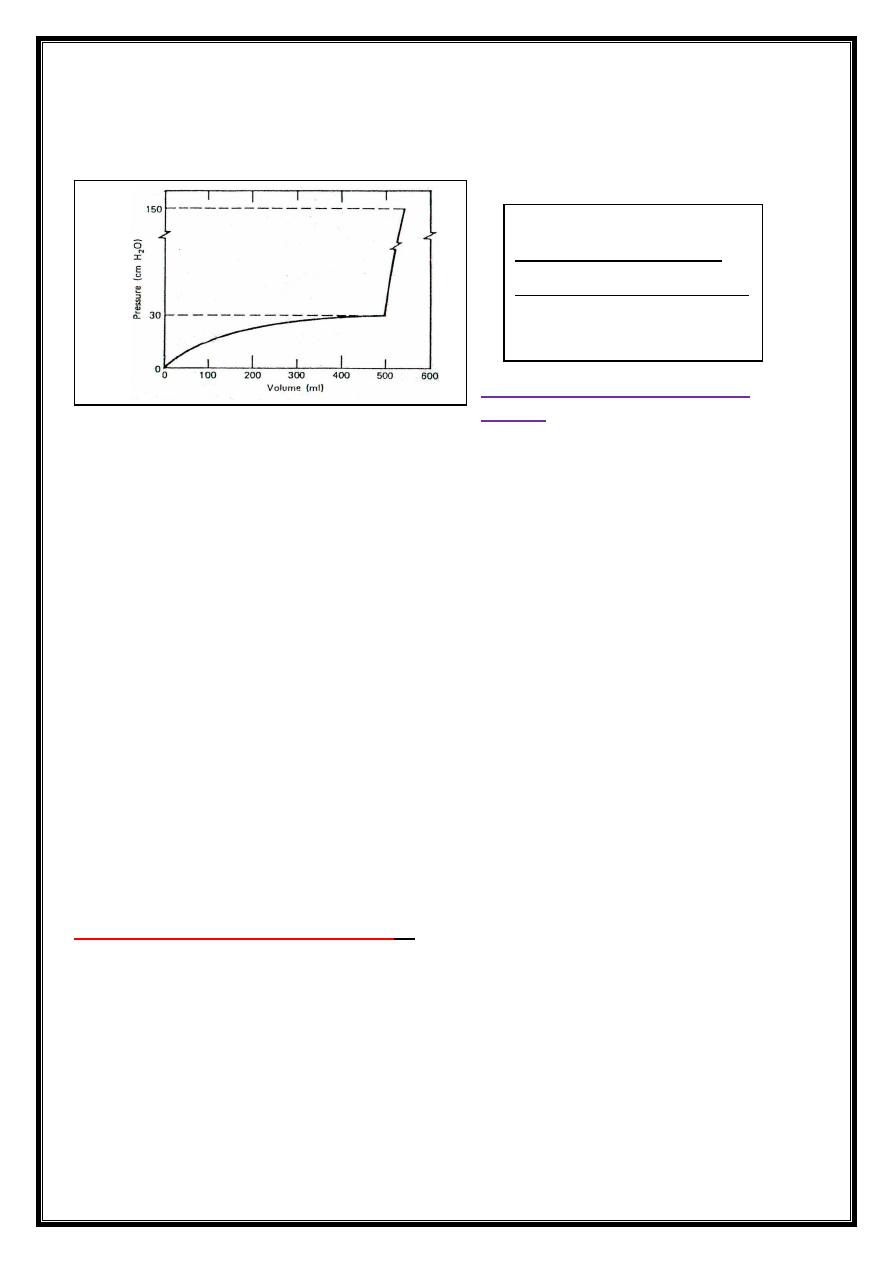
VIII
The figure below shows the typical pressure-volume curve for the bladder,
which stretches as the volume increase.
The bladder pressure increases
during:
1- Coughing 2- Straining 3- Sitting up 4- stressful 5- Studying for exams
6- During pregnancy(During pregnancy, the weight of the fetus over the bladder
increase the bladder pressure and causes frequent urination).
Measurement:
There are two methods to measure the urinary bladder pressure:
1- " In "direct" cystometry .which can be done by inserting a needle (connected
to pressure sensor),through the walls of the abdomen directly into the bladder.
Note:This technique gives information on the function of the exit valves
(sphincters).
2- Pressure in the bladder can be measured by passing a catheter with a pressure
sensor into the bladder through the urinary passage (urethra).The catheter is
connected from other side to pressure transducer.
Hyperbaric Oxygen Therapy (HOT
):-
The body normally lives in an atmosphere that is about one fifth O
2
and four –
fifth N
2
. In some medical situations it is beneficial to increase the proportion of
O
2
in order to provide more O
2
to the tissue.
1- Gas gangrene :-
The bacillus causes gas gangrene then its treated with (HOT) . That is due to
bacillus cannot survive in the presence of oxygen (O
2
).
2- Carbon Monoxide poisoning :-
Relatively slow slope of the major
Portion of the pressure-volume curve.
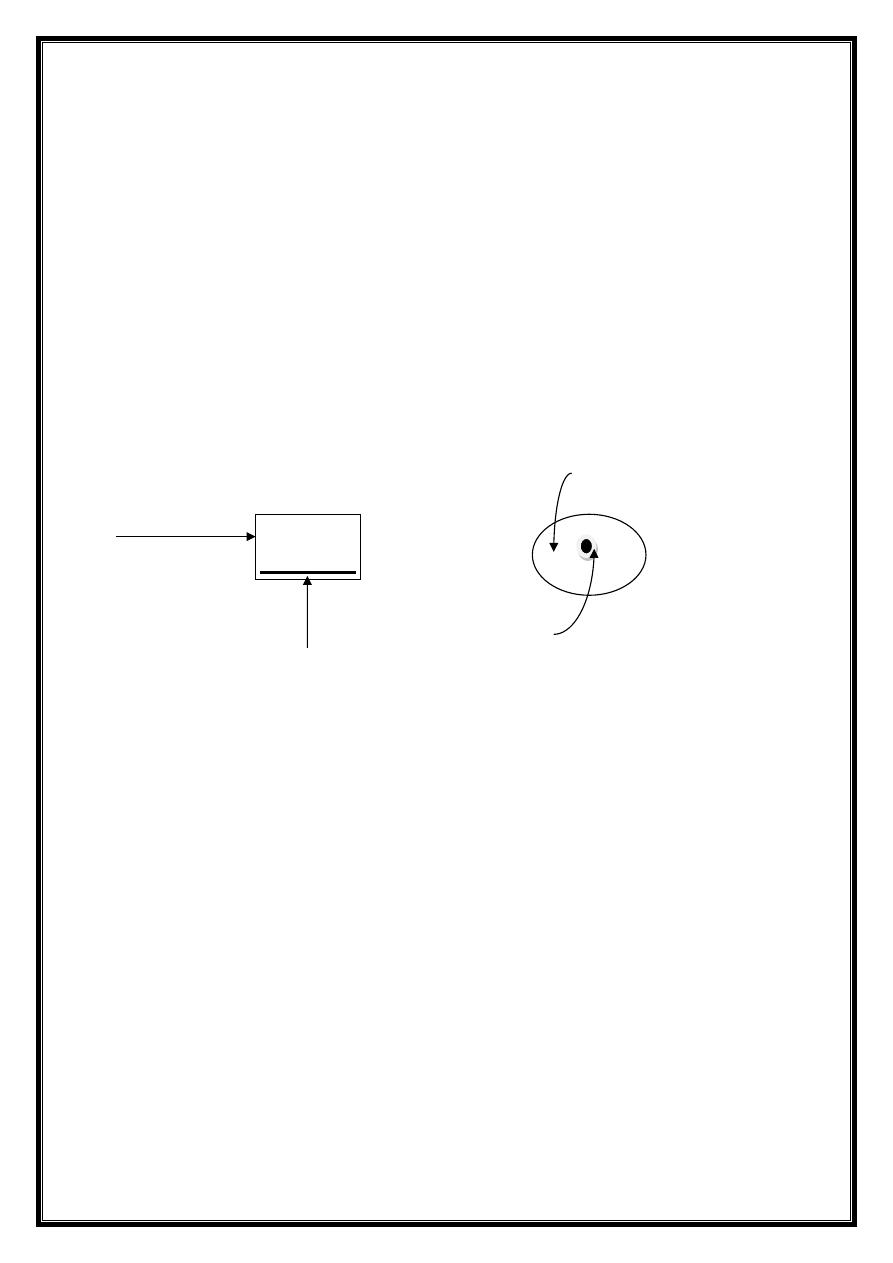
IX
The red blood cells cannot carry O
2
to the tissues because the carbon
monoxide fasters to the hemoglobin at the places normally used by O
2
.
Normally the amount of O
2
dissolved in the blood is about 2% of that
carried on the red blood cells.
By using the (HOT) technique , the partial pressure of O
2
can be
increased by a factor of 15, permitting enough O
2
to be dissolved to fill
the body’s need .
3- Treatment of cancer :-
(HOT) with radiation is given to the patient in transparent plastic tank. The
theory was that more oxygen would make the poorly oxygenated radiation-
resistant cell in the center of the tumor more susceptible to radiation damage .
Tumor
Hot radiation
Transparent plastic tank center
(Poorly oxygenated
Q: If the pressure of a man is 8 cm Hg, Does the man have prostate or not?
A/: PHg= PWater
PghHg=ρghwater
The (g) is canceled from both sides
13.6x8=1xhwater
HWater=108.8 cm.so the man has prostate
Note:
▲ If hwater =100…..the man has prostate
▲ If hwater >100…..the man has prostate
▲ If hwater <100…..the man is normal
